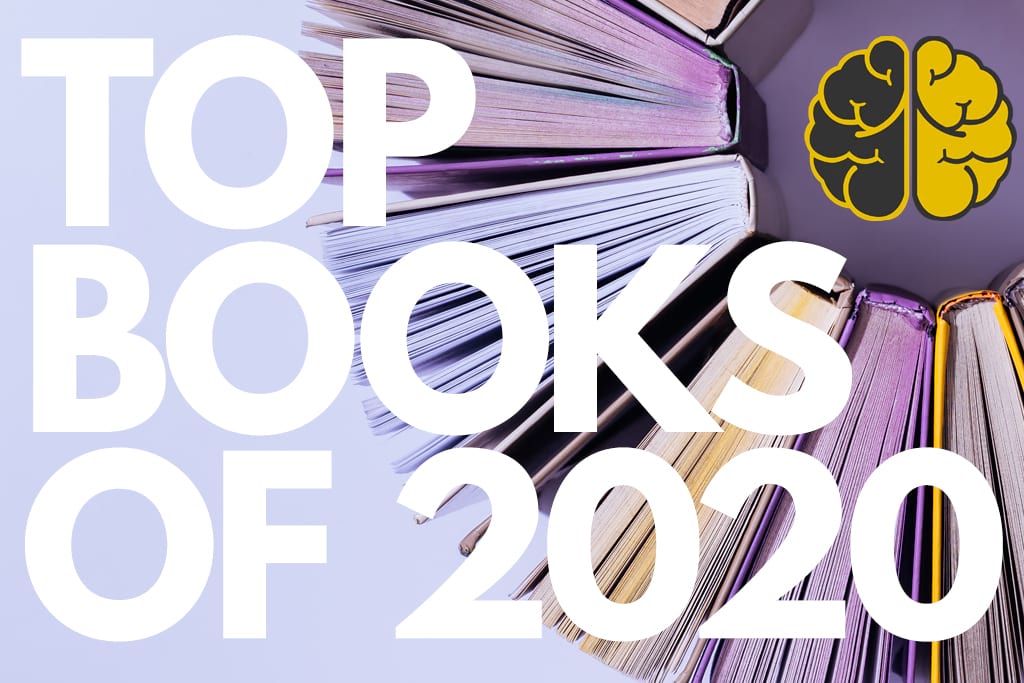We were looking for the best milkshake in Manhattan.
It had been a very hard day mentally, and Todd Herman and I were walking from his office to a nearby shake shop. Todd was dressed like he belonged on the bestseller lists. His book “The Alter Ego Effect” was a huge hit. We were talking about great books and how the classics inspired some of the current bestsellers.
When Todd mentioned “Good to Great” by Jim Collins, I almost walked into traffic. I was so excited to share something with my mentor that I pulled my phone out of my pocket and, without looking up, dialed my voicemail.
“Am I that boring?” Todd asked, laughing.
I didn’t answer. I punched in my voicemail password, skipped through a few, and then held the phone up to his ear.
“Listen to this,” I said.
“Hi, Chris, it’s Jim Collins here,” the voicemail started.
Todd’s eyes got big. Collins is a notorious recluse who rarely does interviews and almost never speaks in person. He wrote some of the quintessential books on business—”Good to Great,” “Great by Choice”—and coined some of the most popular business terms of all time (“the hedgehog concept,” “pushing the flywheel” and a bunch of others).
Todd listened to the whole message. It was several minutes long. Collins loved the work we’re doing at Two-Brain. Then Todd handed me back the phone and said:
“That’s really amazing. But, you know, Collins was wrong about something important.”
We went into a deep discussion about Collins’s “hedgehog concept”—that businesses should be more like hedgehogs and less like foxes. Todd thought the age of specialization was over, that businesses should pivot to match the needs of their clients instead of simply trying to be the best to draw clients to them.
“It’s not the hedgehogs who are on top anymore,” he said. “Collins was wrong. It’s the foxes. The foxes win.”
Then he said, “When you how to build an audience, you’re set for life.”
How to Find Great Business Books
Todd’s words on audience building echoed Seth Godin’s important lesson: “Don’t find an audience for your product. Find a product for your audience.”
That was one of the most important things I learned in 2020. And it wasn’t in a book. But reading books led me to that connection, even though it came on a hot Manhattan sidewalk during a hunt for milkshakes.
Most business books can be distilled into one or two great ideas. As Nassim Taleb wrote, “Most books would have made a good essay, and most essays would have made a good Tweet.” But the best business books share ideas that are actionable. That’s why guys like Mike Michalowicz will always top my list.
One thing I learned in late 2019: Find the principal ideas in a business book using a service like Blinkist. Then, if the idea warrants further consideration or a deep dive, buy the audiobook. If the audiobook contains materials or huge ideas you’d like to come back to later, pick up the hard copy. And if the author’s message really makes you look at life differently, you call the author and ask for mentorship.
Blinkist costs around $120 per year. The audio version costs me $12 per month. I listen to around eight books per month on Blinkist and buy three audiobooks. Then I buy a hardcover book every month or so.
But the real value here isn’t the few bucks I’ve saved. It’s the time and focus.
The average book summary on Blinkist lasts eight minutes. If, in an eight-minute pitch, I can’t find one interesting idea, then I don’t have to waste six hours on the book. If anything, Blinkist oversells big ideas: It’s a bit like watching a preview reel for a comedy and then watching the movie to find all the good jokes were in the previews. If the preview isn’t funny, then you can probably skip the movie.
When someone has truly achieved what you want to achieve, you go to the source and say, “Show me the way.” That’s what I did with Todd. It’s what I’ve done with all my mentors.
And while I don’t buy mentorship from every author, I did it more in 2020 than ever before. I paid for leadership from Seth Godin, Chris Voss, Risha Grant, Cameron Herold and some of the other authors on this list. 2020 was a hard year; I needed mentorship more than ever. And I find my mentors through books.
The Top Books I Read In 2020
Fewer business books were published in 2020 than in 2019, because, well, it takes a while to write a book, and everything we thought we knew in 2019 immediately became outdated.
While I did buy dozens of books in 2020, I found myself returning to the tried and true. The most common question I ask my business heroes now is, “What book have you read five times?”
With that in mind, many of the best books I read in 2020 aren’t new. But their resilience makes them even more important.
“All Marketers Are Liars” by Seth Godin
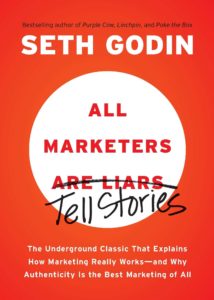
Not only did I read this book twice more in 2020 but I also shipped almost 100 copies out to clients this year. More than ever, 2020 taught us that the story controls our reaction—it isn’t the other way around. In many ways, the tail wags the dog: The story our media told determined the actions we took with COVID.
2020 also taught many gym owners that they needed to tell a new story about fitness and their businesses. Communication really made the difference during the bricks-and-mortar shutdowns. This book holds the key to client affinity and retention.
Top lesson: “Don’t find an audience for your service. Find services for your audience.” In other words, pivot your business to match what your clients need now.
The 75 Hard Challenge by Andy Frisella
This wasn’t really a book you read but a movement you follow. It should be an example to other fitness pros.
I included this “book” because so many of our Tinker-level clients followed the program, and it’s very popular with CEOs. In fact, if you search for “75 hard” on Amazon, you’ll find some tracking logs, but also some self-published accounts of other CEOs doing the challenge. Very few books inspire fan accounts. That’s something for gym owners to note: The #75Hard challenge wasn’t really novel, but it was simple and actionable.
The hallmark of genius is when you see a product and say, “I could have thought of that!” or “I’ve been doing that all along. I just didn’t name it” or “Anyone could have done the same thing.” But no one else did.
The top lesson from #75Hard isn’t that drinking water is magical. The top lesson is that simplicity and clarity get results.
I hope this pushes 75 fitness professionals to write their own books, even if only their clients read them.
“Business Secrets From the Bible” by Daniel Lapin
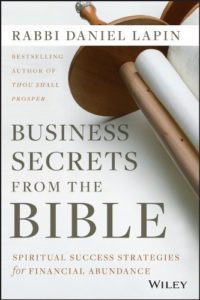
This might be a surprise choice, but the book contains a valuable lesson you’ll rarely hear: that business is good, that profit is good and that creating value for people is the highest service you can provide humanity.
After many months spent in my basement, researching and writing from 4 a.m. until 9 p.m., I didn’t realize how badly I needed to hear that I was doing the right thing. And Lapin—a rabbi—repeats that message over and over throughout the book.
The book is also a great example of how to use stories to make your point stick. While I’ve read most (and repeated many) of the lessons in this book, Lapin does an amazing job of tying his key points to stories from—as he puts it—”Ancient Jewish Wisdom.” The downside: though Lapin promises not to try and convince anyone to switch religions, some dogma does shine through. Still, it’s well worth a listen.
Vivid Vision by Cameron Herold
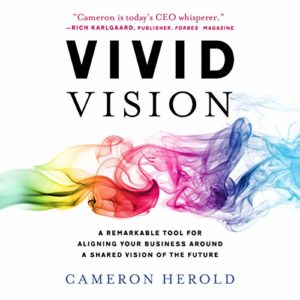
Honorary mention also goes to Herold’s “The Miracle Morning for Entrepreneurs.”
Top lesson of “Vivid Vision”: Most entrepreneurs don’t really know where their business is going. And if they don’t know, then they can’t lead their staff, and their staff can’t lead their clients.
But the hard part isn’t really coming up with a vision of success or a mission or a goal. The hard part is communicating that vision to your staff and teaching them to teach it to your clients.
Cameron covered the “Vivid Vision” exercise succinctly in his earlier book “Double Double,” but this one tells you how to do the really hard part: getting people on board with your vision and moving toward it.
“Fix This Next” by Mike Michalowicz
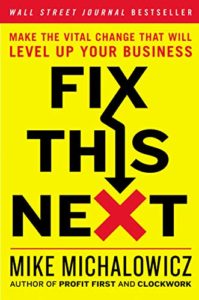
Michalowicz is great at writing books with very clear actions to take. “Fix This Next” is probably his broadest book, but he still pulls it off.
Like every good directive project, Michalowicz starts with a diagnostic: readers can determine which part of their business needs their attention now. It’s a great tool and, like Michalowicz’ best ideas, it’s not a one-and-done. I think entrepreneurs who want to “figure it out for themselves” should probably read this book twice per year and do the exercises each time.
Top Lesson: You can’t do everything. The most important thing you can do is take your business apart and objectively examine each piece. Then focus on the weakest link for as long as it takes to fix it. Then audit each piece of your business again.
“13 Things Mentally Strong People Don’t Do” by Amy Morin
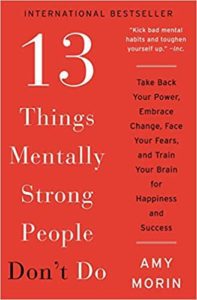
Top lesson: Mentally strong people plan for challenges. Instead of thinking only of the steps in their plans, they think about the obstacles and plan for those obstacles.
For example, one thing that constantly derails me is negative feedback. During the COVID Crisis, when the world’s emotional tolerance was exhausted, I got some uncharacteristic hate mail. Not much, but even one rough letter could derail me for a day. I should have realized it would happen and made a plan to deal with it better instead of letting it distract me.
“The Wealthy Fit Pro’s Guide to Getting Clients and Referrals” by Jonathan Goodman with Mike Doehla
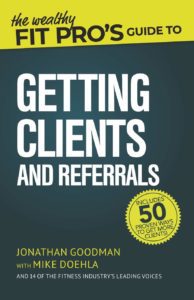
Top lesson: I’m a fan of Mike Doehla, and Jonathan Goodman is one of the very rare fitness business coaches who provides actionable directives. This book probably didn’t get the attention it deserved because it was released in February. But whether your business is online or in person, there are lessons in this book that you absolutely need to hear.
Especially this one: Even though people can find workout videos online for free, they will still pay for fitness coaching. What they’re buying is someone who sorts through all the junk and says, “Do exactly this.” (We call this a “Prescriptive Model” at Two-Brain.) They’re really paying for clarity.
The referral scripts alone will give you a 100x return on the purchase price and reading time of the book.
“Think Like a Rocket Scientist” by Ozan Varol
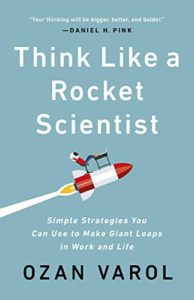
Top lesson: Identify the outcome you want and work backward to achieve it. Forget what you’ve done in the past—those are sunk costs that have no bearing on your future.
This book was a good read for gym owners who needed to pivot to a whole new world in 2020. Many tried to simply replicate what they were doing in their bricks-and-mortar gyms online, and it didn’t work. Instead, they had to adopt a whole new model. Some loved it; most didn’t. Not because they didn’t love the new tools or the new time, but because change is hard. Many missed seeing their clients every day. And no owners wanted to give up on the gyms they’d worked so hard to build.
After reading this book, I felt more ready to make the hard changes that I needed to make to survive. My mission didn’t change, but I had to build a different rocket.
“The Big Leap” by Gay Hendricks
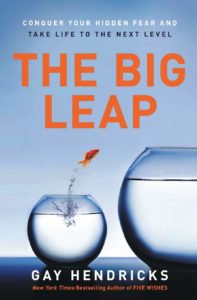
Top lesson: You have a picture of yourself in your mind. That picture isn’t accurate, and it’s probably holding you back. Before you can really grow your business, you have to change your persona.
This book was a complement to one of my top books of 2019, the aforementioned “Alter Ego Effect” by Todd Herman. While Todd took the tactical approach of “how to build an alter ego,” Hendricks starts a few steps earlier—with the reasons you need to shed your current ego (persona).
I found myself nodding as I listened. 2020 made a lot of us “grow up” very quickly and adopt the persona of the person we had to become. But that process starts with the realization that the person you are isn’t the person you need to be—yet.
“Blue Ocean Strategy” by W. Chan Kim and Renée Mauborgne
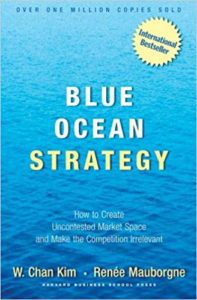
Audible: W. Chan Kim and Renée Mauborgne
Top Lesson: I actually read this book years ago, but I wasn’t ready for it because I couldn’t see the “blue ocean” in fitness.
A year ago, I read it again because online coaching seemed to be the blue ocean into which only a few coaches were swimming. But COVID sped up the evolutionary process of every industry, and—like it or not—almost every coach had to move online or die in 2020.
The key isn’t to find “the thing no one else is doing.” The key is to find the thing your clients need and can’t get anywhere else. As I quoted at the beginning of this post: Don’t find an audience for the thing you want to sell. Find the thing your audience wants to buy and get it to them.
New Fitness Business Book for Gym Owners
Now, a surprise:
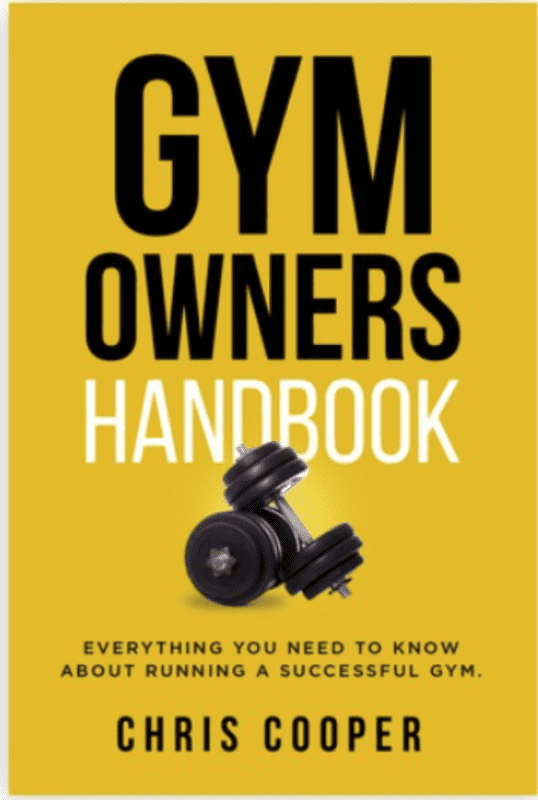
I have a new book—and the cover above is just a draft. I’m still thinking about the title. But it’s really “Two-Brain Business 3.0.”
Want to vote on the cover? Click here.
It’s the best book I’ve ever written for gym owners. It’s clearer, it’s sorted into ideas, and it’s directive. You can open it up, read a chapter and immediately know what action to take next.There’s so much in there that I can’t put it on Blinkist. The knowledge and directives can’t be distilled further because I’ve already boiled down all of my experience into irreducible actions. But I will put it on Audible and read it myself this time.
